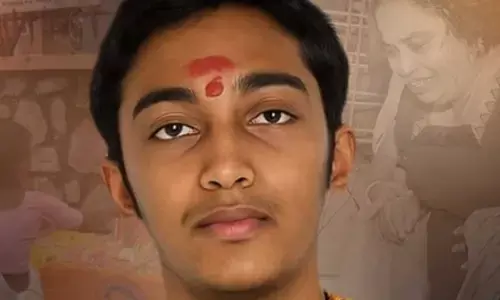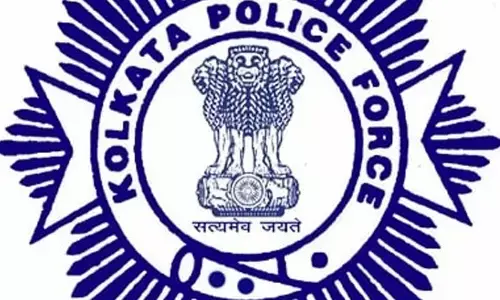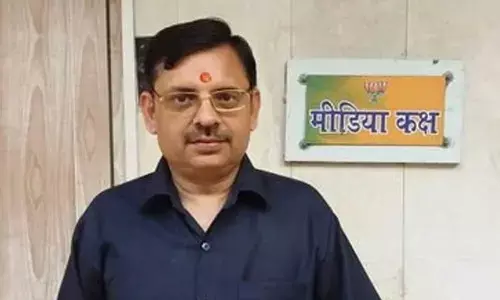North East strife...rooted in history

The Britishers always sought to keep the identity of the hills separate due to the conversion of these people into Christianity. Any merger into a larger State under a different majority language would be a blow to their very religion, they felt. Keeping the tribal identities separate and not allowing them to become a part of India was the British ploy which is being encouraged even now by several political parties who have no interest in real tribal welfare. This political play is evident in the Manipur situation extensively
When it was time for the British rule to end and discussions were going on, centred around the evolution of the North East region in the new framework, the British insisted on maintaining the ‘separateness’ of the plains people and their hill counterparts. No one was sure how it should be integrated with the rest of India.
The leaders of the hill people disagreed and wanted to retain separation from the non-tribal people. An elite Khasi leader, J J M Nichols-Roy, was pushing for autonomy of the hill districts of Assam at the time of independence. His Khasi National Conference communicated with similar organizations such as the Garo National Conference, Mizo Union and Naga National Council.
The constitutional plan sought formation of District Councils to look after tribal affairs in the hill districts, to which the chiefs would be subordinate. The Sixth Schedule of the Constitution of India provided for tribal areas in Assam, Meghalaya, Tripura and Mizoram to be administered autonomously. The Fifth Schedule applied to scheduled areas in other parts of India. Neither schedule applied to the hill areas of Manipur, where all the people are tribal, or to the tribes of the Assam plains.
Notice this fact that Manipur was all tribal then. If it were to remain so, the present problem or the simmering trouble perhaps would not have been there.
The Hill State movement developed in the Garo and Khasi hills. The movement emerged at a meeting in Shillong on 16–17 June 1954, called by Captain Wiliamson Sangma of the Garo Hills District Council, to discuss creation of a separate hill state and amendments to the Sixth Schedule. All the participants were against the attempt to impose Assamese as the state language. The representatives from the United Mikir and North Cachar Hills and the Lushai Hills wanted to remain within Assam but with greater autonomy, while those from the Khasi, Jaintia and Garo communities wanted a separate state or states.
The Naga National Council became dominated by separatists. The Naga leader Angami Zapu Phizo did not participate in the Hill State movement since he was pursuing independence for Nagaland alone. The Khasi leader Rev. B M Pugh (1897–1986) wrote in his 1976 autobiography: “So we agitated for the separation from Assam, for a separate State for the hill people .... We felt that the [State Reorganization] Commission did not want to create a State for the hill areas only, as they feared it would be a Christian State.”
The Britishers always sought to keep the identity of the hills separate due to the conversion of these people into Christianity. Any merger into a larger State under a different majority language would be a blow to their very religion, they felt and held extensive talks with the tribal leaders even before leaving India. In addition, they constantly guided and advised them on their moves in Independent India, too. Keeping the tribal identities separate and not allowing them to become a part of India was the British ploy which is being encouraged even now by several political parties who have no interest in real tribal welfare. This political play is evident in the Manipur situation extensively.
While, the moderates argued in favour of a single large hill state comprising what is now Meghalaya, Nagaland, Arunachal, Mizoram and the districts of Mikir and North Cachar Hills, they also argued that creation of mini-states would lead to separatist movements. A larger state would be beneficial to all as it would allow psychologically and cultural integration with the rest of India at the earliest.
As opposed to this idea, the radical Khasis such as Wickliffe Syiem would not accept loss of independence for the Khasi states, and after trying to get support for the separatist cause at the United Nation went into exile in Bangladesh.
Assamese became the official language of Assam State in 1960, leading to non-Assamese seeking separate states by the people of Khasi-Jaintia and Garo Hills (for Meghalaya) and leading to riots till 1972. Nagaland became an independent state from part of Assam in 1963. Meghalaya, Manipur and Tripura became states in 1972. Arunachal Pradesh gained statehood in 1975 and Mizoram in 1987.
There were always clashes between the different tribes as well as tribals and non-tribals. Dispersal of various ethnic groups over these States has not helped the cause of integration much. Many organizations picked up guns. But one any accord was signed, the importance of the organization dwindled as more militant sections would go their way.
Yet another problem was that these accords always guaranteed cultural rights and this has not helped the cause much. Societies, developed or not, tribal or non-tribal, always have various layers and any promise on the generally agreed upon cultural aspects would come in for dispute soon within the community too. So, the matter of territorial or ethnic base could never have been done satisfactorily. Nagaland, Manipur (Nagas), Assam (Bodos who are a plains tribe) and Tripura are perfect examples of this.
The societies of the hills somehow preferred violence and riots to adjustment and good neighbourhood policies. The developed among these always viewed the lesser developed as a handicap in their growth and this led to further hardening of stance. The plainsmen always controlled the lion’s share in the economy and all development was almost confined to their valleys which also led to further marginalisation and anger among the people.
“Garoland” movement (from Meghalaya) was one such. Violent clashes between 1995–2005 between Nagas and Kukis, between Kukis and Tamils in Moreh, and between Pangals and Meteis have rocked the states. The Hmar continued to agitate to join Mizoram during this period. However, little was done to address the problems and no peace accords were signed.




